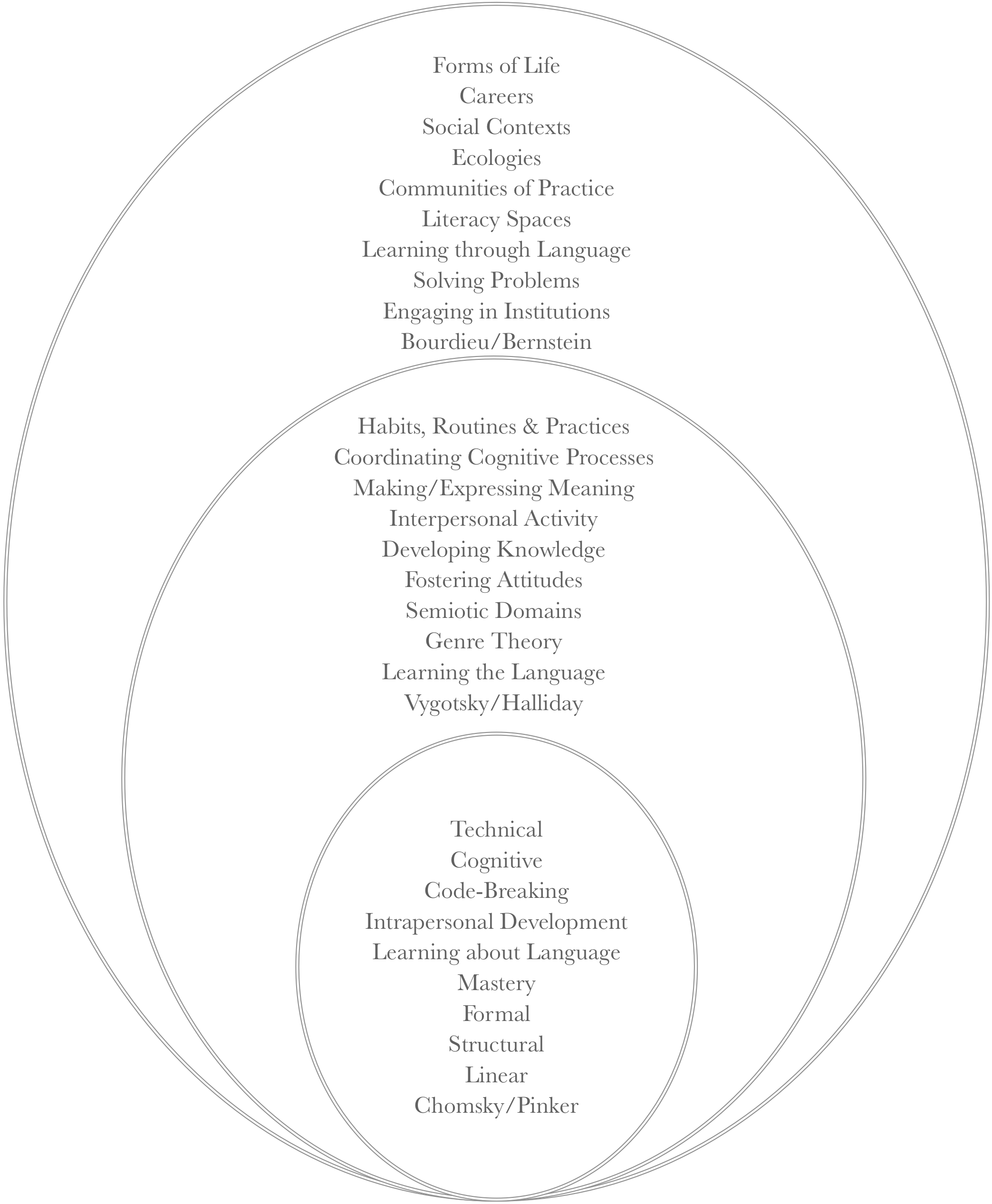The following paragraphs and diagrams have been added to the Balancing Instruction page ... Explore an enjoy!
The diagrams to the left/below specifically point to the levels of literacy activity that must be developed in tandem: constrained (core) skills, meaningful practices, disciplinary practices, and extended practices. This is consistent with Au's (2002) emphasis on local knowledge (code-breaking skills), global knowledge (comprehension/compositional skills) and affective knowledge (developing interests, affinities and attitudes). An image of an integrated approach to reading is presented in order to remind us that the balance/orchestration/integration of practices presents the greatest challenge for "teachers", whether we are referring to parents in the home or professionals in the classroom.
Perhaps contentiously, I will argue that a particular home environment provides a better avenue to explore how the multiple conceptions of literacy pedagogy can take shape (Heath, 1983). In some homes, one can imagine how bedtime reading, alphabetic flashcard practice, scaffolded writing instruction and language-in-context practice can occur with fairly fluid orchestration (which is reliant upon access to material and temporal resources). The adult has a regular routine of rich reading of favourite books ( building vocabulary ), time set aside to play with enticing alphabetic games ( enhancing word recognition ), time to write a birthday card to grandma ( modelling of genre conventions ), and an emphasis on language in the act of - for instance - baking a cake ( learning vocabulary connected to valued activity ). Each activity emphasises different aspects of language and literacy development within a social context. Each activity is integrated through the joint intentional activity of the adult & child. In this case, one can see how "a highly verbal and emotionally stable family environment greatly benefits vocabulary and reading." (Zhang et al, 2013, p. 665)





